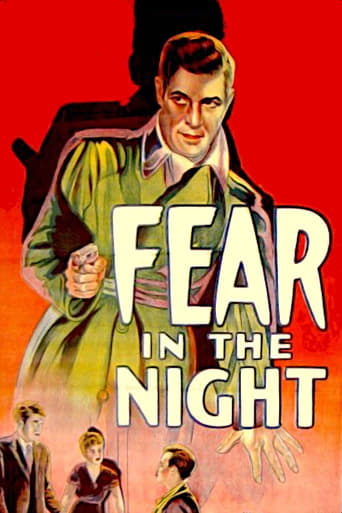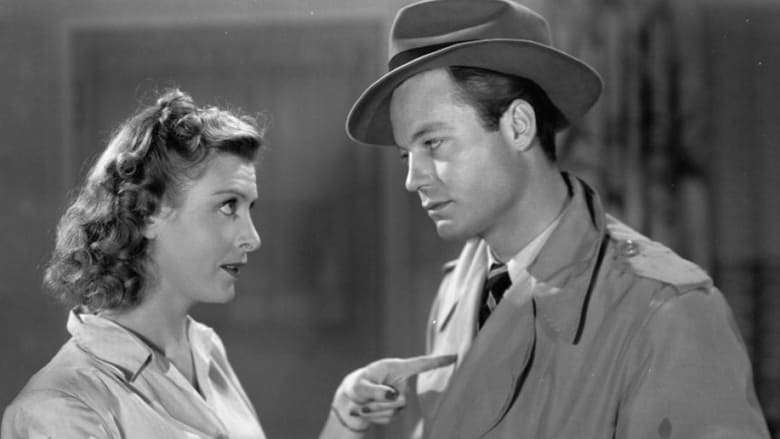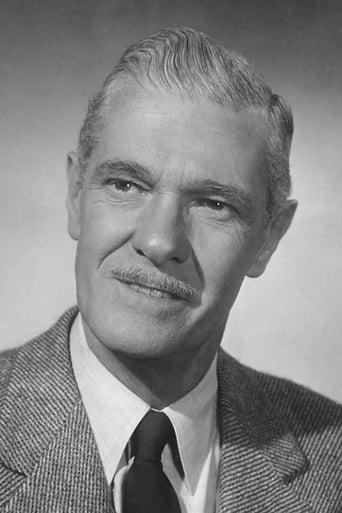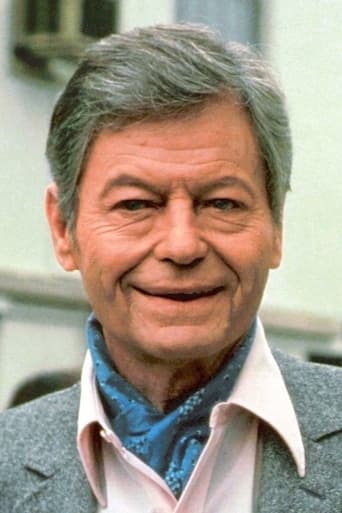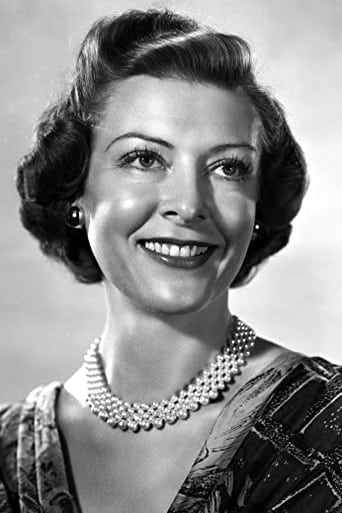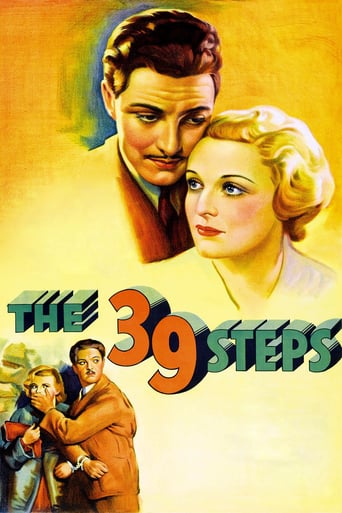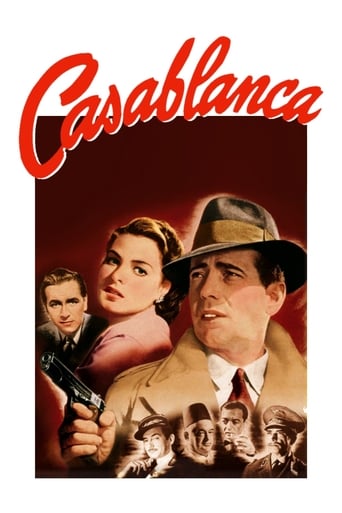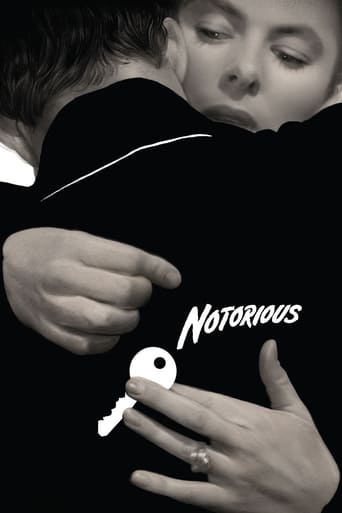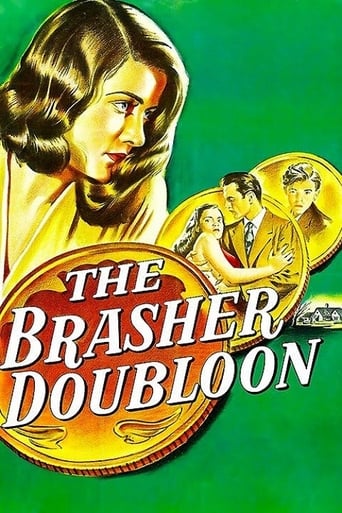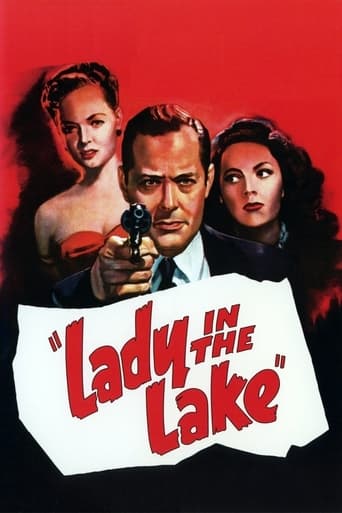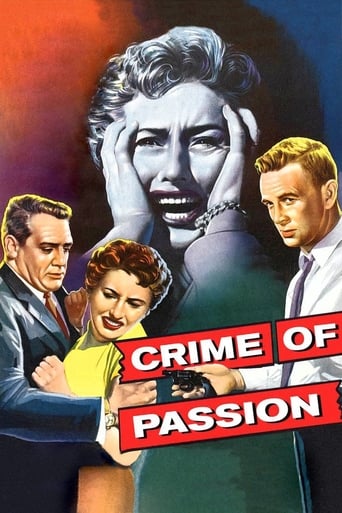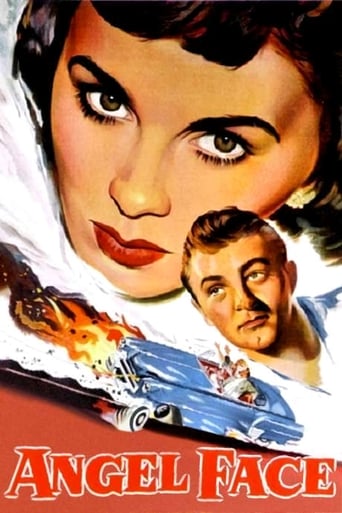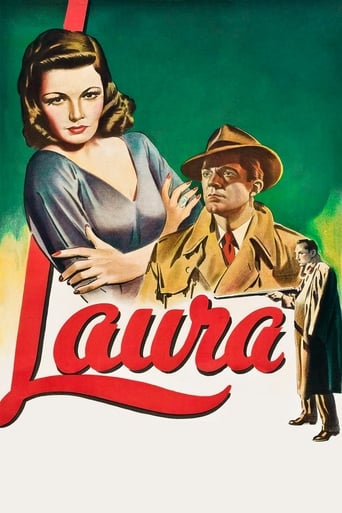Fear in the Night (1947)
The dream is unusually vivid: Bank employee Vince Grayson finds himself murdering a man in a sinister octagonal-shaped room lined with mirrors while a mysterious woman breaks into a safe. It is so vivid that Vince suspects it may have really happened. To get the dream off his mind, he goes on a picnic with some relatives. When a thunderstorm forces his party into a nearby mansion, Vince discovers that the bizarre room does exist, and it means nothing but trouble.
Watch Trailer
Cast


Similar titles
Reviews
Truly Dreadful Film
Lack of good storyline.
Absolutely brilliant
Blistering performances.
Not every screen version of a Cornell Woolrich (aka William Irish) yarn is another "Rear Window" or "Phantom Lady." In the wrong hands, you're liable to end up with "Fear in the Night," a flimsy low-budget adaptation of a short story that deserved better. You know you're in trouble when the first reel is largely devoted to voice-over while the central character wanders around a cheap hotel room. The premise, a bank clerk who dreams he has committed a murder only to wake up grasping a button from the victim's jacket, is pure Woolrich. The execution (an all-too-appropriate term) is pretty grim. A young De Forrest Kelly of "Star Trek" fame stars as the conscience-stricken "murderer" back before he learned to act. Paul Kelley, on the other hand, proves that even in a shoddy production, at least someone knows how to deliver a line. Suggestion: hunt down a collection of Woolrich/Irish stories and you'll discover why this strange, haunted author was legitimately the "father of cinema noir." And why so many filmmakers couldn't resist adapting his tales -- even those who did it as badly as the crew behind "Fear in the Night."
As I prepare to launch another film noir marathon, I thought I'd get back into groove with something small, offbeat and quickly sketched, but authored by a guy who was one of the preeminent creators of noir: Cornell Woolrich.His Deadline by Dawn would make my list of 10 favorites in the genre, it captures the chimeric noir world on the deepest level. Noir is all about the hallucination, the anxious narration causally tied to the world of the film. This structure is probably more explicit here than in any other noir film, including Lang's: the film starts with the narrator having a nightmare where he kills a woman in a mysterious octagonal room with mirrors, but when he wakes up in his room he finds traces of the murder. Over the course of the film, bit by bit memory seeps back into his narration. A storm leads him back to the fateful house. A cop brother- in-law and his girlfriend act as conscience, escorting him on the journey of atonement. It's all about guilt, memory and mishaps of fate. But the execution is slapdash, the actor doesn't have any tragicool charisma. It's off.But how about this as explication of noir dynamics? What we see and the protagonist experiences in the opening scene as the noir nightmare was very much real, but at the same time illusory for him in the moment of experience—double perspective. And how about this as the deeper cosmic joke of the prankster gods of noir? There would be no problem for our guy if only he didn't wake up that morning with the memory. So it wasn't the killing, but memory that causes stuff—being conscious of the nightmare, it acquires reality. Superb Woolrich.So this is a miss, but right off the bat we have some expert delineation of the noir universe.Noir Meter: 3/4
Writer-director Maxwell Shane remade the film in 1956 as Nightmare starring Kevin McCarthy as the impressionable young man and Edward G. Robinson as his strong-willed brother-in-law.This was Kelley's feature film debut. He'd previously appeared in a small role in a 1945 short variously titled The Letter and Time To Kill starring George Reeves, Barry Nelson, Don Hanmer, Jimmy Lydon and Don Taylor. Although the re-make with Edgar G. Robinson has a bit more clout in the acting department, this one features a marvelous performance by Robert Emmett Keane, stepping out of character for once as a pest of a neighbor. True, Kelley's portrayal is little too overdone. The schmuck is supposed to be weak-willed but Kelley turns him into such a nerve-racked fraidy-cat that he tends to lose audience sympathy. Paul Kelly, of course, is well cast as the detective, and, aside from Kelley, he receives excellent support all the way down the line. Although the film was lensed on a "B" budget by the two dollar Bills, it seems to have more production values than the usual Pine-Thomas bills of fare.
"City Across the River" writer & director Maxwell Shane has crafted a hypnotic little film noir crime thriller based on a story by celebrated "Rear Window" author Cornell Woolrich. "Fear in the Night" unravels about 50 minutes into its 72 minute running time, but most mysteries have to give up the ghost late in the game. Incidentally, "Fear in the Night" never wears out its welcome. Meantime, this clever but contrived melodrama boasts first-rate performances by Paul Kelly, Ann Doran, Kay Scott, and Deforest Kelly in his cinematic debut as a killer on the loose. The last ten minutes are pretty good as we learn how the murder was committed and yet another murder is attempted. Although this film was produced in 1947, Shane has fashioned a modest but engrossing whodunit with "G.I. Jane" lenser Jack Greenhalgh's interesting visuals, particularly a dreamy opening scene in an octagonal room with mirrors on all the doors. This scene with its lap dissolves and narration seems rather sophisticated for its day. Our sympathetic protagonist, Vince Grayson (Deforest Kelly of "The Law and Jake Wade"), dreams he is in an octagonal room paneled with eight mirrors. He watches as a blonde woman and a man crack open a safe concealed behind one of the doors. Suddenly, Vince engages in close-quarters combat with the safe-cracker, and his opponent sinks his hands into Vince's neck. The blonde slips Vince an awl, and he plunges it into the safe-cracker's heart! The woman scrambles out of the room in terror while our hero hides the corpse of his adversary behind one of the doors. Vince locks this door and pockets the key. He awakens from this eerie nightmare at 8:43 AM in his downtown Los Angeles hotel room. Initially, he believes it was only a bad dream until he peers into the mirror and discovers thumb marks on his neck. Moreover, he not only finds dried blood on his wrist, but also removes a key and button in his pocket. Ominously enough, he remembers grasping these things during his dreamy struggle with the guy that he stabbed to death. Disconcerted, Vince calls in sick at the bank where he works as a teller. Vince's boss Clyde Bilyou (John Harmon of "Hitch Hike to Hell")suspects that Vince may have embezzled money, but his fears prove groundless. Naturally, since his girlfriend, Betty Winters (Kay Scott of "The People Against O'Hara"), works as a cashier at the same bank, she grows concerned about Vince's welfare. Meantime, poor Vince remembers the distinctive mirrored room and a struggle that ended in the death of another man. Stricken with a guilty conscience, Vince visits his brother-in-law, Los Angeles Police Detective Cliff Herlihy (Paul Kelly of "Springfield Rifle"), who is sanding a miniature version of Martha Washington's bed. This minute detail contributes to Cliff's penchant for details that late helps him clear his brother-in-law. What is doubly cool is that you find yourself suspecting Kelly since he could play a villain as well as a hero. Vince confides in Cliff about the crime, but his brother-in-law insists that Vince is suffering from stress related to his work. Vince takes out an advertisement in the newspaper for a house with an octagonal mirrored room, but this leads him nowhere. Later, Cliff takes his wife Lil (Ann Doran of "The Gumball Rally"), Vince, and Betty for a picnic in his new, second-hand sedan to Solanor. They cruise out into the country with Vince and Betty occupying the back seat. Cliff has Lil feeding him marshmallows while he lies sprawled on his back, but Lil gets scared when she hears thunder. Cliff is genuinely considerate toward his wife because she is pregnant. Everybody piles into his car and Cliff drives away as it begins to rain. Cliff's windshield wipers malfunction, and they look for someplace to hole up until the rain slackens. Vince directs them to a house. Since Vince doesn't drive, Cliff grows suspicious about his knowledge of the area. They pull up to a big house and Vince knows where the key to the front door is. Our heroes enter the uninhabited house. Cliff turns on the gas fireplace and brews tea while Vince wanders off to satisfy his curiosity. Not surprisingly, Vince finds the mirrored room. Later, downstairs in the kitchen, Cliff and Vince are surprised when Sheriff's Deputy Torrence (Jeff York of "Old Yeller") catches them in the house. Torrence tells them about a murder that occurred in the house while the man of the house, Lewis Belknap (Robert Emmett Keane of "Gossip") was away on business in Mexico. Torrence explains that a man was killed and Belknap's wife was run down and killed by somebody in a car. Vince is relieved because he cannot drive, but later he faints when he sees photographs of the dead woman.The last twenty minutes pile on some incredible revelations, including the fact that Vince did kill the man in the house. Deforest Kelly is well cast as the innocent victim who is not as innocent as he believes. Shane does a masterful job of stringing up along with the ending that is unusual.

